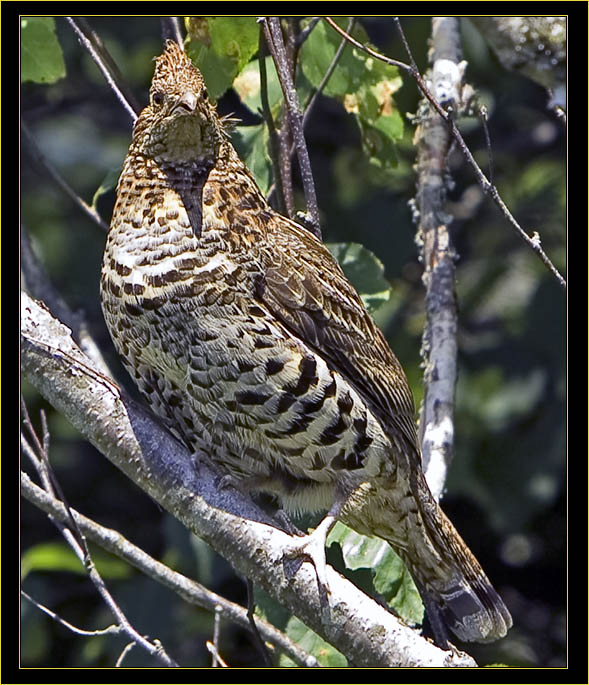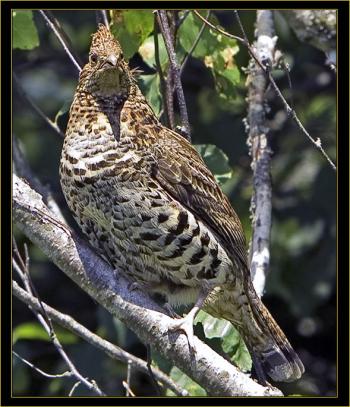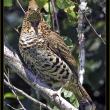Grousing about partridges
Just the other day we were driving down Route 27 toward Wiscasset admiring the red and gold autumn hillsides when a football-sized bird, its short wings in a blur, came bursting from the roadside trees and flashed across in front of us. It was a ruffed grouse, and fortunately neither our car nor any others were close enough to make it his last flight.
By “ruffed grouse” of course we mean a partridge, which is what most Mainers call the ruffed grouse. Certainly when we were growing up we heard people speak of going partridge hunting, never grouse hunting. But the official name of the species as determined by none other than the American Ornithologists’ Union is ruffed grouse.
The one that we saw rocketing across the road recently may have just been one flushed from its hiding place by a person or animal, or it may have been a young bird following a mysterious urge to move away from where it was hatched – nobody has yet been able to answer the question, “Why did the chicken cross the road,” and the same can probably be assumed of grouse.
But ruffed grouse are famous for what have been called “crazy flights,” when a dispersing bird takes off and flies fast and straight (grouse don’t seem to be able to fly any other way) until it either finds a nice-looking patch of habitat or it gets into trouble.
What kind of trouble? Flying in front of cars is one kind of trouble that often is serious. But there are lots of stories about ruffed grouse flying straight through the plate glass windows of homes and even of shop windows in downtowns, leaving the startled people inside wondering if they were under attack. We well remember finding the body of an unfortunate bird on a sidewalk in front of a storefront in downtown Bangor.
What partridges are better known for, though, are the low thumping sound that the males make to attract females and defend their territories from other males. Many a person has been fooled into thinking that a distant tractor was being started up each morning before they discovered that the sound was really the drumming of a ruffed grouse from the woods nearby.
Incredibly, the males make the sound by standing erect (usually on a large fallen log) and snapping the wings forward and backward in the air so quickly that it makes a thumping sound. The single thumps start off slow and then eventually speed up into a rolling purr at the end. This sound is most easily heard in the spring, when the male ruffed grouse do this drumming display to attract females that they hope will choose to mate with them. Males sometimes also do some drumming in the fall, too, presumably to let any newcomer males know that they should keep moving and to let females in the area know that they might want to stick around until next spring.
Of course, it’s bird-hunting season here in Maine, so other birds aren’t the only creatures that may tune in to a drumming partridge. If a hunter hears it, that sound could be – can we say it? – a dead give away.
Dr. Jeff Wells is the senior scientist for the Boreal Songbird Initiative. During his time at the famed Cornell Lab of Ornithology and as the Audubon Society's national bird conservation director, Dr. Wells earned a reputation as one of the nation's leading bird experts and conservation biologists. Jeff's grandfather, the late John Chase, was a columnist for the Boothbay Register for many years. Allison Childs Wells, also formerly of the Cornell Lab of Ornithology, is a widely published natural history writer and a senior director at the Natural Resources Council of Maine. Together, they have been writing and teaching people about birds for decades. The Maine natives are authors of the highly acclaimed book, “Maine's Favorite Birds.”
Event Date
Address
United States

























